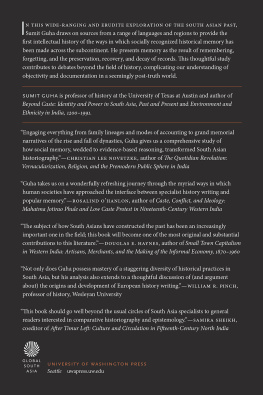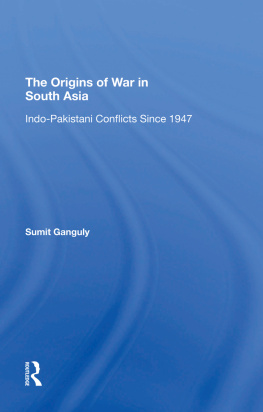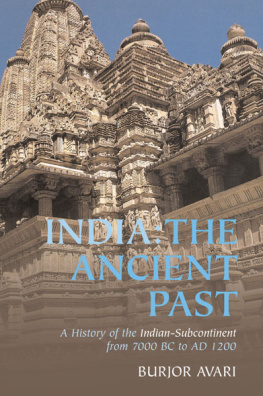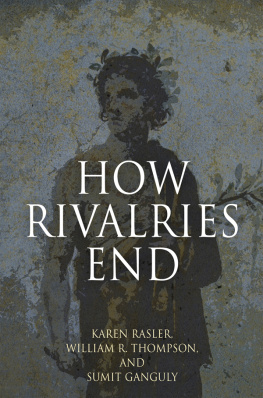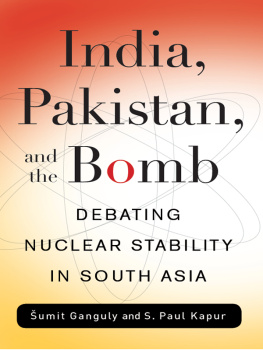Sumit Guha - History and Collective Memory in South Asia, 1200-2000
Here you can read online Sumit Guha - History and Collective Memory in South Asia, 1200-2000 full text of the book (entire story) in english for free. Download pdf and epub, get meaning, cover and reviews about this ebook. year: 2019, publisher: University of Washington Press, genre: Religion. Description of the work, (preface) as well as reviews are available. Best literature library LitArk.com created for fans of good reading and offers a wide selection of genres:
Romance novel
Science fiction
Adventure
Detective
Science
History
Home and family
Prose
Art
Politics
Computer
Non-fiction
Religion
Business
Children
Humor
Choose a favorite category and find really read worthwhile books. Enjoy immersion in the world of imagination, feel the emotions of the characters or learn something new for yourself, make an fascinating discovery.
- Book:History and Collective Memory in South Asia, 1200-2000
- Author:
- Publisher:University of Washington Press
- Genre:
- Year:2019
- Rating:4 / 5
- Favourites:Add to favourites
- Your mark:
- 80
- 1
- 2
- 3
- 4
- 5
History and Collective Memory in South Asia, 1200-2000: summary, description and annotation
We offer to read an annotation, description, summary or preface (depends on what the author of the book "History and Collective Memory in South Asia, 1200-2000" wrote himself). If you haven't found the necessary information about the book — write in the comments, we will try to find it.
Sumit Guha: author's other books
Who wrote History and Collective Memory in South Asia, 1200-2000? Find out the surname, the name of the author of the book and a list of all author's works by series.
History and Collective Memory in South Asia, 1200-2000 — read online for free the complete book (whole text) full work
Below is the text of the book, divided by pages. System saving the place of the last page read, allows you to conveniently read the book "History and Collective Memory in South Asia, 1200-2000" online for free, without having to search again every time where you left off. Put a bookmark, and you can go to the page where you finished reading at any time.
Font size:
Interval:
Bookmark:


Padma Kaimal
K. Sivaramakrishnan
Anand A. Yang
SERIES EDITORS

History and Collective Memory in South Asia, 12002000
SUMIT GUHA
UNIVERSITY OF WASHINGTON PRESS
Seattle
2019 by the University of Washington Press
Printed and bound in the United States of America
Composed in Minion Pro, typeface designed by Robert Slimbach
Cover and frontispiece illustration: A hero-stone with an old Kannada inscription (1286 CE) from the rule of Yadava King Ramachandra at the Kedareshvara temple in Balligavi, Karnataka state, India. Photograph by Dinesh Kannambadi. Courtesy Wikimedia Commons.
232221201954321
All rights reserved. No part of this publication may be reproduced or transmitted in any form or by any means, electronic or mechanical, including photocopy, recording, or any information storage or retrieval system, without permission in writing from the publisher.
UNIVERSITY OF WASHINGTON PRESS
www.washington.edu/uwpress
LIBRARY OF CONGRESS CATALOGING-IN-PUBLICATION DATA
Names: Guha, Sumit, author.
Title: History and collective memory in South Asia, 1200-2000 / Sumit Guha.
Description: Seattle: University of Washington Press, [2019] | Series: Global South Asia | Includes bibliographical references and index. |
Identifiers: LCCN/ 2019015554 (print) | LCCN/ 2019981028 (ebook) | ISBN 9780295746227 (hardcover : alk. paper) | ISBN/ 9780295746210 (pbk. : alk. paper)
Subjects: LCSH/: Collective memorySouth AsiaHistory. | Great BritainColonies South AsiaHistory.
Classification:
LCC/ DS340 .G84 2019 (print) | LCC/ DS340 (ebook) | DDC/ 954.0072dc23
LC/ record available at https://lccn.loc.gov/2019015554
LC/ ebook record available at https://lccn.loc.gov/2019981028
The paper used in this publication is acid free and meets the minimum requirements of American National Standard for Information SciencesPermanence of Paper for Printed Library Materials, ANSI z39.481984>.
To the memory of Dr. Mrinal Kumar Chatterjee, 19302018
Our times are testing the truth of Orwells bitter aphorism Who controls the past controls the future; who controls the present controls the past. I was working on an article in 2004 that came to form part of this book when a leading research institute in Pune, India, was invaded and vandalized by a mob that objected to the institutes remote connection to an American scholar who was said to have written disrespectfully of the seventeenth-century King Shivaji. The history wars and the wholesale replacement of truth with truthiness might have seemed to be passing phenomena, but they have lasted. This book was completed soon after post-truth became the Oxford English Dictionarys word of the year in 2016.
The word had been a decade or more coming. Soon after the launching of the US-led invasion of Iraq in 2003, the Pulitzer Prizewinning political journalist Ron Suskind interviewed a number of the decision-makers involved in that historic blunder. One of them dismissed Suskinds questions about facts and consequences. Suskind was told that he was a mere dweller in the reality-based community, one of the people who accepted things as they were. His interlocutor, on the other hand, dwelt among those whose acts of will made reality for lesser mortals to inhabit and historians to analyze. It is almost as though the anonymous official had read Foucault and decided to mold discourse through power. Postmodern thought had thus been captured by its inveterate critics in the power elite. Reality and knowledge of it (including historical knowledge) were judged but artifacts of the time. According to the unnamed Bush administration official quoted by Suskind in a 2004 New York Times piece, When we act, we create our own reality. Less than twenty years later, even action has become redundant: reality is whatever was last tweeted.
Alongside this, however, is the contradictory concept of history and the past as monumental, permanent. That is especially so in the United States, where history or our past is seen as solidly embodied in stone and bronze. Indeed, the concept of historical inquiry as fundamentally complete is so strong as to make the idea of an uncontested and irrefutable history a part
The monumental and the malleable may, however, be reconciled if we grant the capacity of power to produce factsthe claim made by Suskinds anonymous interlocutor. The casting of statues and razing of monuments alike involve the exercise of power. Force can move a monumentcan it also change history?
One answer is that it can be changed by the consensus of the profession. In March 2017 the American Historical Association (AHA) sought to define the protocols of historical practice. It did this as part of a statement criticizing a presidential executive order that had cited a few carefully selected facts from recent history. The AHA wrote that it had applied the disciplines professional standards to the revised directive and found that it does not pass historical muster. The AHA also explained the said professional protocols: History is a discipline that begins with questions and impartially marshals evidence before generating answers. A compelling argument requires facts presented in context.
The new administrations reply came in a budget proposal that emerged soon after. It planned to eliminate all four federal agencies that fund the arts and humanities, including support for museums and libraries. Nor are such efforts confined to the US. External assault on the community of professional historians has indeed intensified across the world in recent years. Reflecting on these developments made me more keenly aware of how the academy exists only as part of a society. That caused me to look more closely at how academic study and the creation of public knowledge of the past have been enfolded in political and economic systems through the last few centuries, especially in the American academy wherein I dwell and the Indian one whence I came.
This book has been many years in preparation. The project commenced with the support of a fellowship from the American Council of Learned Societies in 20034. It continued during my years at Rutgers, The State University of New Jersey, and was largely completed during a semester of leave granted by the University of Texas at Austin. I am grateful to these supporting beams of the scholarly frame for affording me the time needed to think and write.
I am indebted to many scholars for their generous response to my inquiries over nearly two decades. Prachi Deshpande shared her research on historical narratives with me for nearly two decades. Ramya Sreenivasan offered valuable comments on many presentations around these themes over the decades. Conversations with Cynthia Talbot on her studies of the historical and monumental traditions of Rajasthan clarified and developed my own thought. Dipesh Chakrabarty, whose book is echoed in much of this one, read parts of it and offered valuable advice. Phillip Wagoners research on Telugu literature inspired my earliest forays into Marathi histories. Rochona Majumdar helped clarify the status of some Bengali texts, and Michael Dodson guided me to mid-nineteenth-century sources on Indology. Gautam Bhadra shared a copy of a rare Bengali text. Saurabh Dube offered a participants view of the spread of subaltern studies to the Spanish Americas. Camilla Townsend guided me to valuable sources from that region, and her research on Nahuatl histories in Mexico gave me a deeper understanding of how judicial and political processes shape memories. My colleagues Miriam Bodian, Toyin Falola, Azfar Moin, and Patrick Olivelle were more than collegial in answering my requests for information. Brian Levack led me to a treasure trove of medieval heraldic sources. Deborah Bolnick patiently devoted several hours to clarifying my understanding of contemporary DNA studies and methods, and guided me to the work of Jennifer Pierre and her collaborators. Mary Rader in the University of Texas Library was indefatigable in locating sources and texts. Ajay Skaria permitted me to read his unpublished PhD dissertation. Gayatri C. Spivak offered a valuable clarification of her own early work. Additionally, I am indebted to Nikhil Bellarykar, Ethan Kleinberg, Dilip Menon, William (Vijay) Pinch, Jennifer Pierre, Anupama Rao, Ulrike Stark, and Gary Shaw for their help at various times. Indrani Chatterjee generously shared her books and thoughts and gave me solace and support through the many years this project has taken to complete. The editors at the University of Washington Press have been generous with their time and attention through the several iterations this project has undergone; Richard Isaac has patiently pointed out the many infelicities and omissions in successive drafts.
Font size:
Interval:
Bookmark:
Similar books «History and Collective Memory in South Asia, 1200-2000»
Look at similar books to History and Collective Memory in South Asia, 1200-2000. We have selected literature similar in name and meaning in the hope of providing readers with more options to find new, interesting, not yet read works.
Discussion, reviews of the book History and Collective Memory in South Asia, 1200-2000 and just readers' own opinions. Leave your comments, write what you think about the work, its meaning or the main characters. Specify what exactly you liked and what you didn't like, and why you think so.

